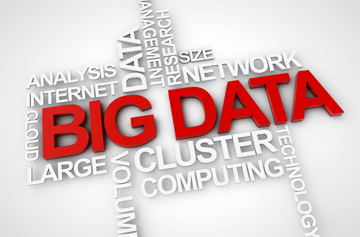 Identifying, capturing, managing, and analyzing Big Data is one of the biggest challenges organization face en route to their digital transformation. Data cleansing services and other data processing services are assisting many organizations to meet the challenges efficiently. Company CIOs need analytics expertise alongside a good understanding of the data sciences and algorithmic approaches that will provide the required data analytics for their companies. The business data received by large companies over large periods of time are so voluminous and complex that traditional data processing application software systems may not be able to handle it properly. Why is it so important to manage this data? The insight provided by big data and data sciences are vital to support mission-focused programs, plan and execute predictive models, shareable models and algorithmic approaches, and also reduce costs while improving bottom line.
Identifying, capturing, managing, and analyzing Big Data is one of the biggest challenges organization face en route to their digital transformation. Data cleansing services and other data processing services are assisting many organizations to meet the challenges efficiently. Company CIOs need analytics expertise alongside a good understanding of the data sciences and algorithmic approaches that will provide the required data analytics for their companies. The business data received by large companies over large periods of time are so voluminous and complex that traditional data processing application software systems may not be able to handle it properly. Why is it so important to manage this data? The insight provided by big data and data sciences are vital to support mission-focused programs, plan and execute predictive models, shareable models and algorithmic approaches, and also reduce costs while improving bottom line.
Big data analytics technology extracts useful information by analyzing different types of big data sets. It reveals dormant patterns, market trends and consumer preferences that can help organizations make more informed business decisions. This technology comprises several techniques and processing methods. In fact, collective use of big data analytics technology by enterprises to gain relevant results for strategic management and implementation makes them effective. There are many ways in which small and medium businesses are using big data to achieve the best possible outcomes for their firms. Let us look at some of the key technologies used by small enterprises and large-scale corporations.
- Predictive Analytics
Predictive analytics uses a variety of statistical techniques from predictive modeling, machine learning, and data mining that analyze current and historical facts in order to make predictions about the future. In fact, these software or hardware solutions allow firms to discover, evaluate, optimize, and deploy predictive models by analyzing big data sources to improve business performance or lessen risk. - NoSQL Databases
NoSQL (not only SQL) is an alternative to traditional relational databases. These databases are an approach to database design that can accommodate a wide variety of data models including key-value, document, columnar and graph formats. They are especially useful for working with large sets of distributed data. - Knowledge Discovery Tools
These tools enable businesses to extract information and new insights from large repositories of structured and unstructured data stored in multiple sources such as file systems, databases, streams, APIs, and other platforms and applications. - Stream Analytics
This software is useful for filtering, aggregation, and analysis of data stored on multiple platforms, and in multiple formats which an organization needs to process. This analytics also allows connection to external data sources and their integration into the application flow. - In-memory Data Fabric
This provides low-latency access and processing of large quantities of data by distributing data across the dynamic random access memory (D-RAM), Flash, or SSD of a distributed computer system. - Distributed Data Store
It is a computer network where data is stored on more than one node often in a replicated fashion. This helps to protect against independent node failures and loss or corruption of big data sources. The data is also replicated for low latency quick access on large computer networks. - Data Virtualization
Data virtualization allows an application to retrieve and manipulate data without requiring technical details such as data formats, the physical location of data and can provide a single customer view of the overall data. This technology delivers information from various data sources including big data sources such as Hadoop and distributed data stores in real-time and near-real time. - Data Integration
Data integration combines data from different sources and helps provide users with a unified view of them. In fact, data integration tools allow businesses to streamline data across a number of big data solutions such as, Apache Hive, Apache Pig, Apache Spark, Amazon EMR, Hadoop, Couchbase, MapReduce, and MongoDB. - Data Preprocessing (Data preparation)
It is a data mining technique that involves transforming raw data into an understandable format. Data preparation software lightens the burden of sourcing, shaping, cleansing, and sharing diverse as well as complex data sets to accelerate the data’s usefulness for analytics. - Data Quality Assurance
Data quality software can conduct data cleansing and enrichment on large, high-velocity data sets by utilizing parallel operations on distributed data stores and databases. Partnering with a good provider of data cleansing services is a great option to ensure superior data quality.
In the years to come, companies will make excellent use of big data and analytical techniques to gain valuable business knowledge and provide their customers with even better products and services. It is important that all data-gathering capabilities are used cautiously to prevent the creation of worthless information. To gain the right, applicable insights and gain a competitive edge, organizations must be strategic in how they approach, manage, and analyze data.




